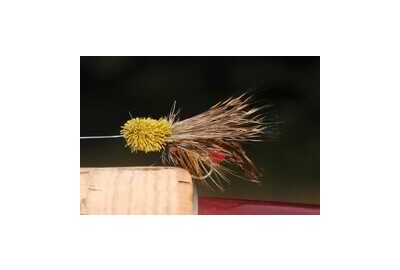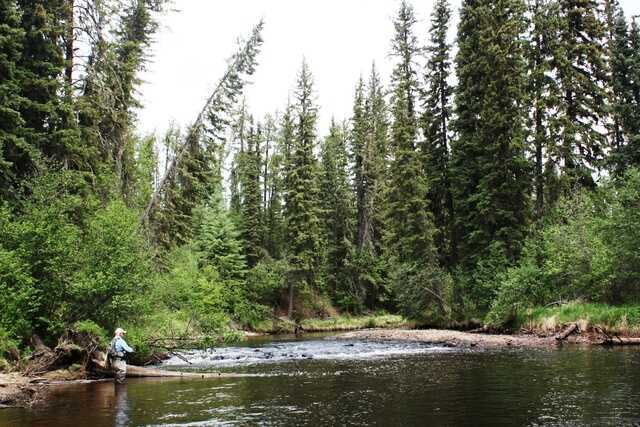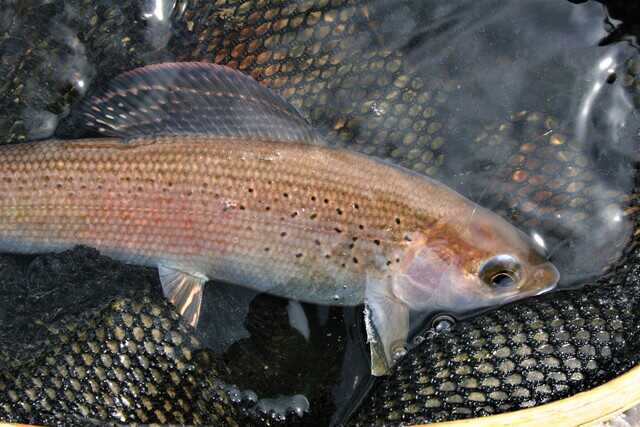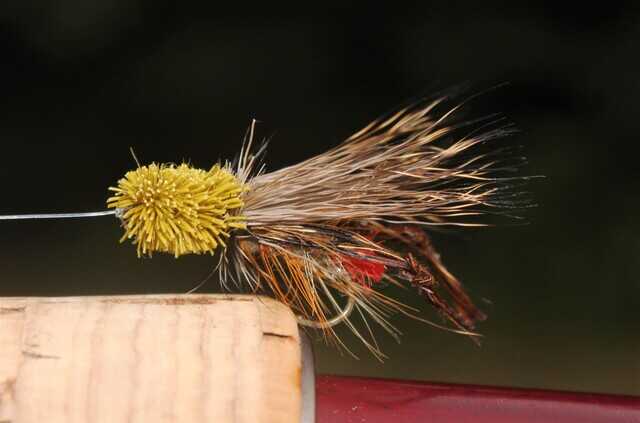One sublime sunny afternoon a few years back I was fishing a classic northern Alberta grayling stream that tumbled over golden gravels through a jackpine and white spruce valley.
The water was the colour of the strong tea they drink on Scottish building sites and my wading-boot tops were merely a rumour.
But after many millenniums of adaptation the Arctic grayling that thrive here have become genetically conditioned to seeing right through it.
And I was able to pick up a fish every now and again on a Yellow Stimulator dry fly– selected as much for its angler visibility as the big, bushy fly’s fish-getting qualities.
Where angling on our muskeg-stained Boreal rivers makes following a dry fly dancing down a bubble line a major challenge.
Successful as the trip was, considering the ideal conditions and past experiences, the little black river should have produced better.
It was time to change tactics.
I reached into my fly-fishing vest for a spool of 4X tippet material, nipped off a two-foot section and tied it to the hook bend of the Stimulator. Then attached a Gold-ribbed Hare’s Ear nymph to the trailing end.
Known in fly-fishing circles as a “hopper-dropper” set-up.
The rig got its name from the reel fly, traditionally a grasshopper pattern.
And the “dropper”, which is an old British fly-fishing term for a fly suspended from the “cast” with a section of leader material.
I cast the hopper-dropper to the head of a glide, then followed the progress of the Stimmie down the flow.
Halfway through the dry-fly hesitated, twitched, then disappeared into the murky run. I raised the rod, set the hook and after a nice tussle a fine 12-inch buck grayling was soon wriggling in my net – its blue spotted dorsal-fin “sail” glistening in the high summer sun. The Hare’s Ear still firmly attached to its jaw.
And so it continued for the rest of the afternoon with the strikes coming equally between the high-floating Stimulator and the bottom bouncing nymph. Turning a so-so day into a memorable outing.
It was the best of both worlds and made the long drive home down Highway 63 more a victory lap than an endurance rally.
Here’s how the hopper-dropper works.
The Set-up
Sub-surface fly-fishing is generally done either with an active fly - which is either stripped or swung “down and around” across the current. Or dead-drifted where the angler as much as possible attempts to simulate a food source drifting naturally in the stream flow.
Because this is usually accomplished with a slack leader, a floating device – known as a strike indicator – is attached to the fly-line.
The hopper component of the set-up essentially acts as the indicator – with the added advantage of being itself a lure.
Many times while fishing with a plastic or yarn indicator, the trout or grayling - rather than eating the subsurface nymph - will come up and smack the floating bobber.
Much to the angler’s frustration.
Having a floating fly also act as the indicator certainly even the odds.
The dropper part of the set-up can be created in three ways.
Either attached to the indicator fly’s hook bend using a standard clinch knot.
Tied through the hook eye if it has a large enough diameter to accommodate two leaders.
Or rather then nipping off the “tag” end of the indicator fly’s knot, making it long enough to be the dropper leader.
I prefer the hook bend tie.
Using a dropper leader one breaking-strength lighter than the tapered leader is a way of hopefully saving the top fly from the hang-ups and break-offs which inevitably occur when running a trailing nymph.
A regular 4 or 5-weight fly rod is all you need to fish hopper-dropper.
But keep in mind the dropper leader will add an additional two or three feet to your terminal tackle’s length. So take extra care casting to make certain your line loop turns over completely to prevent frustrating tangles.
The Flies
While fishing hopper-dropper the floating fly is sometimes considered simply an indicator with a hook-up an unexpected surprise addition to a day of nymph fishing.
Clearly this a waste of opportunity. Especially during the periods of the fly fishing season where there’s a good chance that large floating insects are present.
These may be super-sized mayflies like brown or green Drakes, stoneflies or, of course, grasshoppers. Other terrestrials like large black foam beetles should also be considered depending on the time of year.
But the key to effective hopper-dropper angling is to keep the top fly floating with flies constructed from buoyant materials such as high density foam or hollow deer hair.
Having a container of dry-fly desiccant and silicon-based floatant in your vest or chest pack is absolutely required to keep the indicator fly riding high and dry all day.
The dropper fly should also replicate the nymphs prevalent at that time of year.
Mayfly imitations like Gold-ribbed Hare’s Ears, Pheasant Tails or Copper Johns are always going to be go-to sub-surface flies.
But stonefly, caddis and chironomid nymphs should not be overlooked.
Same with attracters – like Prince and Evil Weevil nymphs – which can represent anything or nothing. But for some reason still work.
A key to successful hopper-dropper angling is to maintain the dynamic balance between the floater and the trailing nymph.
The top fly must stay floating while the tail fly should have enough added weight to get it quickly down to the deck where the bottom hugging fish are generally holding.
Either by attaching a split-shot or two a few inches above the tail fly or building the added ballast into the nymph if you are tying your own.
This can be done through a bead-head or a few wraps of lead, copper or non-toxic wire added to the tie.
The Technique
Fishing hopper-dropper is not much different from regular fly-fishing.
The key is a drag-free presentation so that both the floating and subsurface fly goes down the run at the same speed as the current.
A fly that drags, darts or moves unnaturally in most situations is a turn-off for feeding fish.
In a hopper-dropper set-up, it become a double whammy because it imparts negative movement on both flies.
Drag – usually caused by conflicting current speeds – can be mitigated by throwing slack loops either upstream or downstream depending on the stream flows - know to fly fishers as “mending” the line.
Depending on the speed differential sometimes several mends are required to maintain a drag-free presentation over the length of the run.
A way of determining drag is to use surface bubbles as a guide. If the indicator fly is moving faster or slower than the natural flow, then it’s not floating naturally.
But not all drag is bad drag. Some large surface-borne insects – like grasshoppers and egg-laying stoneflies - often create a considerable amount of surface disturbance.
Popping or slapping down a hopper imitation or allowing a stonefly imitation like a Stimulator or Sofa Pillow to wake across the current can induce strikes. Some of them savage.
Also flyfishing – before dead-drifting dry flies and nymphs became dominant – was traditionally done by swinging soft hackle wet flies down and across the current with sinking lines.
At times swinging nymphs can be effective.
Another hopper-dropper variation is a dry-dry adaptation. The top fly – again a larger dry fly - is the indicator fly. While the tail fly is the hatch matcher.
This can been effective when fishing what’s known as a “blanket” hatch where literally thousands of mini-mayflies or midges form windrows along the seam edges.
Following a #20 Trico or Griffiths Gnat with thousands of similar looking natural insects on the water becomes a mission impossible.
But the larger dry fly is much easier to spot amongst the mayhem. Simply suspend the tiny hatch imitation on a dropper from the big dry’s hook bend.
Then wait for movement indicating a strike.
But always keep in mind that hopper-dropper angling is only possible in jurisdictions where it is legal. In British Columbia and Canada’s National Parks, angling with more than one hook or lure is prohibited.
If you want to double your chances and capitalize on your fly-fishing success, often nothing works better than fishing with a hopper-dropped set-up.
To experience the best of both worlds.








